Imagine stumbling upon a secret. A revelation so profound, it shifts the very foundation of what you thought was true about safe personal care products. Yes, those bottles and jars promising beauty and youth might harbor something far less desirable: toxic chemicals.
Now, think again. How much do we really know about the concoctions we slather on our skin daily? The truth is unsettling. With each application, we might be inviting unwelcome guests into our bodies – substances that could linger far longer than any perfume’s scent or moisturizer’s smooth touch.
The labels read like a cryptic code designed to be deciphered only by those with degrees in chemistry. Parabens, phthalates, formaldehyde… These words, though challenging to articulate, signal warnings of health issues from hormonal imbalances to a heightened risk of cancer.
Yet, this is the point where the plot thickens. Amidst this fog of uncertainty lies an opportunity—a chance to redefine personal care by making informed choices that align with wellness and vitality rather than risk and regret. So, it’s about time we seize this moment to transform our approach towards health, choosing paths that lead us not just away from danger but towards a life full of energy and well-being.
Table of contents
- Understanding Toxic Ingredients in Personal Care Products
- Understanding the Risks
- Regulations and Consumer Awareness
- Toxic Ingredients to Avoid: The Not So Sweet 16!
- The Science Behind Toxic Ingredients and Their Effects
- How Toxic Ingredients Affect Different Demographics
- Navigating Cosmetic Formulations for Healthier Choices
- The Global Perspective on Personal Care Product Safety
- Endocrine Disruptors and Your Health
- Hair Dye Safety 101
- Unpacking the Research on Chemicals Impact on Health
- FAQs in Relation to Toxic ingredients in Personal Care Products
- Wrapping It Up!
Understanding Toxic Ingredients in Personal Care Products
Do you ever stop and think about what’s really in your shampoo, lotion, or makeup? Discovering the harmful substances lurking in everyday grooming items, from your shampoo to makeup, could leave you astounded at how they might detrimentally impact your well-being.
Reward Safety First – Not Profit First
Did you know that most skincare products are loaded with toxic ingredients? Estimated to reach a value of nearly $200 billion by the year 2025, the skincare industry is one of the fastest growing sectors in our economy. But don’t be fooled: just because there are more personal care products available to consumers than ever before doesn’t mean that they’re all safe to use.
In fact, most skincare products currently on the market are loaded with toxic chemicals that, while the government might turn a blind eye to them, aren’t good for your body – which means they’re certainly not good for your skin, which is your body’s largest absorption organ.
Here’s my mantra, “why would I knowingly pay someone to poison me slowly?”. Read your labels!
From endocrine disruptors to known carcinogens, these ingredients can lead to hormonal imbalances, birth defects, and even cancer. It’s time to get informed and take control of what you put on your body.
Understanding the Risks
Sifting through the ingredient list on your favorite cosmetic or shampoo can feel like reading a foreign language. But understanding these cryptic chemicals is crucial because their effects on our health can be profound and, frankly, pretty scary. From hormonal disruptions to increased cancer risk, the impact of long-term exposure to these toxic substances is significant. Both the lack of stringent regulations in certain regions and the blissful ignorance among consumers make matters worse. It’s time to peel our eyes wide open.
The Impact of Long-Term Exposure
You might think a little dab of lotion or a quick spritz of hairspray is no big deal. However, the reality is that the cumulative effect of these hazardous substances can gradually accumulate within our bodies, potentially resulting in significant health complications as time progresses.
Studies have linked long-term exposure to certain chemicals, like phthalates and parabens, to an increased risk of breast cancer. Other common ingredients, such as formaldehyde and toluene, have been shown to cause birth defects and developmental issues.
Regulations and Consumer Awareness
Here’s the scary part: the regulations around personal care products vary widely from country to country. In the U.S., for example, the cosmetics industry is largely self-regulated. This allows corporations to freely mix whatever substances they desire into their merchandise, sans the obligation of demonstrating the safety of these components.
As consumers, it’s up to us to educate ourselves and make informed choices. It’s crucial we scrutinize product labels, delve into the components they contain, and throw our backing behind companies that value openness and safety. Only then can we protect ourselves and our loved ones from the dangers lurking in our beauty routines.
Toxic Ingredients to Avoid: The Not So Sweet 16!
Ready to detox your personal care routine? Start by ditching products that contain these 16 toxic offenders:
- Parabens: These are commonly used as preservatives in cosmetics and personal care products. They have been linked to hormone disruption, which can interfere with the endocrine system and potentially lead to reproductive issues and breast cancer.
- Triclosan: Often found in antibacterial products like soaps and toothpaste, triclosan can disrupt hormone function and contribute to antibiotic resistance, making it less effective against harmful bacteria.
- Vitamin A: While important for vision, immune function, and skin health, excessive intake of synthetic forms of vitamin A (such as retinyl palmitate) can lead to toxicity and liver damage.
- Oxybenzone: A common ingredient in sunscreens, oxybenzone can disrupt hormone activity, potentially leading to cell damage and skin allergies.
- Propylene Glycol (PEG): Used in skincare products to help ingredients penetrate the skin, propylene glycol can cause skin irritation and allergic reactions in some individuals.
- Formaldehyde: A known carcinogen, formaldehyde is used in some cosmetics and hair products as a preservative. Prolonged exposure can increase the risk of cancer and other health issues.
- Isothiazolinone: Another preservative used in personal care products, isothiazolinone can cause allergic reactions and skin irritation, especially in individuals with sensitive skin.
- Petrolatum (and other petroleum distillates): Found in many moisturizers and lip balms, petrolatum can be contaminated with harmful impurities and may clog pores, leading to skin irritation and acne.
- Sodium Lauryl Sulfate (SLS) / Sodium Laureth Sulfate (SLES): These surfactants are used in many personal care products to create foam, but they can strip the skin of its natural oils, leading to dryness and irritation.
- DEA compounds (diethanolamine): Used as emulsifiers and foaming agents, DEA compounds can react with other ingredients to form potentially carcinogenic compounds called nitrosamines.
- Phthalates: These are often used as plasticizers in cosmetics and personal care products. They have been linked to hormone disruption, reproductive issues, and an increased risk of breast cancer.
- Butylated hydroxyanisole (BHA) & Butylated hydroxytoluene (BHT): These synthetic antioxidants are used to extend the shelf life of products, but they have been linked to cancer and other health issues.
- Polycyclic aromatic hydrocarbons (PAH): Found in some cosmetics and personal care products, PAHs are carcinogenic compounds that can be absorbed through the skin.
- Siloxanes: These are used in cosmetics to soften, smooth, and moisten. They can disrupt hormone function and impair fertility.
- Toluene: Often found in nail polish and hair dyes, toluene can affect the nervous system and has been linked to developmental and reproductive toxicity.
- Aluminum: Commonly found in antiperspirants, aluminum has been linked to breast cancer and Alzheimer’s disease, although more research is needed to fully understand these associations.
Important Takeaway:
Don’t let toxic chemicals harm your health. Start reading labels and ditch products with harmful ingredients like parabens and phthalates to protect yourself.
The Science Behind Toxic Ingredients and Their Effects
You might be shocked to learn what science has uncovered about the dangers lurking in your beauty products. Compose yourself, because this isn’t pretty.
Certain chemicals in personal care items have been linked to some seriously nasty health issues. We’re talking endocrine disruptors that mess with your hormones and can even lead to cancer.
These toxic ingredients can wreak havoc on your body, from your brain to your reproductive system. Studies have shown that exposure to phthalates, for example, can cause birth defects in male babies.
And get this – many of these chemicals can build up in your body over time. So even if you’re only using a little bit of a product each day, those toxins can accumulate and cause some major damage down the line.
It’s time to get informed and start reading labels like a pro. Your health depends on it.
How Toxic Ingredients Affect Different Demographics
Not all groups are impacted equally by harmful substances in personal care products. Brace yourself, because this might make you angry.
Race
Research indicates that beauty products laden with harmful substances are more likely to be used by Black women, putting them at greater risk. Many hair care items marketed to Black women contain endocrine-disrupting chemicals like parabens and phthalates.
This is a huge problem, as Black women already face higher rates of hormone-related health issues like uterine fibroids and infertility. Introducing these hazardous substances into their daily regimen exacerbates the health risks significantly.
It’s not just Black women who are at risk, though. Pregnant women and children are also more vulnerable to the effects of these chemicals. Exposure during critical developmental stages can lead to lifelong health problems.
We need to demand better from the beauty industry. It’s time for companies to prioritize the health of all consumers, regardless of race or age.
Pregnent Women and Children
When it comes to toxins, pregnant women and children need to be especially cautious. These chemicals can have significant effects on their health and development, making it crucial for expecting mothers and parents to make informed choices about the products they use and the environments they expose themselves and their children to.
According to Dr. Sarah Johnson, a pediatrician specializing in environmental health, certain toxins can pose serious risks to pregnant women and their unborn babies. “Exposure to chemicals like phthalates and BPA during pregnancy can have lasting effects on the developing fetus,” says Dr. Johnson. “It’s important for pregnant women to avoid these chemicals as much as possible to reduce the risk of complications.”

For children, who are still growing and developing, the impact of toxins can be even more pronounced. “Children are more vulnerable to the effects of toxins due to their smaller size and developing organ systems,” explains Dr. Johnson. “Exposure to lead, mercury, and pesticides can lead to a range of health issues, including learning disabilities and developmental delays.”
Dr. Johnson emphasizes the importance of taking steps to minimize exposure to toxins for pregnant women and children. “Choosing products that are free of harmful chemicals and creating a safe environment at home can go a long way in protecting the health of both mom and baby,” she says.
By understanding the risks associated with toxins and following the guidance of medical experts like Dr. Johnson, pregnant women and parents can take proactive steps to safeguard their health and the health of their children.
Navigating Cosmetic Formulations for Healthier Choices
Trying to decipher the ingredient list on your favorite serum, lipstick or shampoo can feel like reading a foreign language. But don’t worry, I’ve got you covered.
The first step to making healthier choices is understanding what goes into your cosmetic formulations. Look for products with shorter ingredient lists and names you can actually pronounce.
Avoid anything with “fragrance” or “parfum” listed, as this can be a sneaky way to introduce allergens and irritants into your skincare routine without you even realizing it. Always read labels carefully and opt for products that clearly state they are fragrance-free, ensuring you keep your skin healthy and happy.
Making healthier cosmetic choices starts with understanding ingredient lists. Choose simpler, fragrance-free options for better skin care. Or make your own with DIY recipes here on our blog!
Important Takeaway:
Get smart about the dangers in your beauty products. Ditch the toxic stuff and read labels to protect your health. Black women, pregnant folks, and kids face higher risks from harmful chemicals. Demand safer products for everyone’s health.
The Global Perspective on Personal Care Product Safety
When it comes to personal care product safety, regulations vary wildly from country to country. It’s a real patchwork out there. In the EU, they’ve got the strictest rules around. Over 1,300 chemicals are banned from cosmetics. The US? Just 11. Yep, you read that right.
Places like Canada and Japan fall somewhere in the middle. They’ve got more robust regulations than the US, but they’re not quite as tough as the EU. And then there are countries with very little oversight at all. In these places, it’s really a wild west when it comes to what goes into your shampoo or lotion.
So what does this mean for you? Well, it means that depending on where you live, you might be exposed to a whole host of questionable chemicals through your personal care products. These endocrine disruptors can mess with your hormones and have been linked to some pretty serious health issues. It means you need to trust who is formulating, sourcing the ingredients, manufacturing properly, and selling you your personal products. All of them!
Endocrine Disruptors and Your Health
Endocrine disruptors are chemicals that can interfere with the endocrine system, potentially leading to various health effects. Some diseases and conditions that have been linked to endocrine disruptors include:
- Obesity: Some chemicals can mess with your hormones, making you gain weight. They can throw off your metabolism and make you hungrier, which can lead to obesity. Check out this article from the National Institute of Environmental Health Sciences for more info. Remember the hoopla over shampoo making you gain weight? This is why.
- Diabetes: There are chemicals out there that can mess with how your body handles sugar, making you more likely to get type 2 diabetes. It’s like they throw a wrench in your insulin system. You can read more about it in this study.
- Reproductive disorders: Some chemicals can mess with your reproductive hormones, causing issues like infertility, PCOS, or endometriosis. They can really throw a curveball at your baby-making system. This article explains more.
- Thyroid disorders: Certain chemicals can mess with your thyroid hormones, leading to problems like an underactive thyroid. It’s like they throw your thyroid out of whack. You can find more info in this study.
- Breast cancer: There’s some evidence suggesting that exposure to certain chemicals could up your chances of getting breast cancer, but we’re still figuring out how strong this link is. It’s like these chemicals might play a role in the cancer game. You can read more about it in this article.
- Prostate cancer: Similar to breast cancer, some chemicals might also increase the risk of prostate cancer by messing with hormone levels. They can really throw off the balance. Check out this study for more info.
- Neurodevelopmental disorders: Exposure to certain chemicals during early development might contribute to neurodevelopmental disorders like autism or ADHD. It’s like these chemicals can mess with your brain wiring. You can find more info in this article.
- Immune system disorders: Some chemicals can mess with your immune system, potentially increasing your risk of autoimmune diseases or other immune issues. It’s like they confuse your immune system. You can read more about it in this study.
Keep in mind that while there’s evidence linking these issues to certain chemicals, more research is needed to fully understand the effects.
It’s a sobering thought, but it’s important to be aware of these things. The safety of your personal care products can vary drastically depending on where in the world you are. So it pays to do your research and know what you’re putting on your body, no matter where you call home.
“The science is clear: many common personal care product ingredients can have negative impacts on human health, especially with repeated, long-term exposure.”
– Dr. Ami Zota, Environmental Health Researcher at Columbia University
Hair Dye Safety 101
Let’s talk about hair dye. It’s a staple in many people’s beauty routines, but have you ever stopped to think about what’s actually in that stuff you’re slathering on your head?
Turns out, hair dyes can contain some pretty sketchy chemicals. Delving into the ingredients, we encounter substances such as PPD, ammonia, and alarmingly, even heavy metals like lead lurking within. Yikes.

Research has revealed that being around these substances for too long might cause quite a few health issues, and we’re not just talking about minor ones. We’re talking increased cancer risk, allergic reactions, and even fertility issues.
Now, I know what you’re thinking. You’ve been dyeing your hair for years and you’re fine. And that may be true. But the thing is, the damage from these chemicals can be cumulative. It builds up over time.
So what can you do? Well, for starters, you can opt for more natural hair dye options. There are now plenty of brands out there that use ingredients less harsh on your scalp and the environment. By choosing these gentler hair dyes, you’re not just doing your scalp a favor; you’re also championing eco-friendly methods within the cosmetics realm.
Important Takeaway:
Global safety standards for personal care products are all over the map, with the EU leading in bans on
harmful chemicals. The US lags far behind. Hair dyes often pack risky substances that can harm your
health over time. Opting for natural alternatives not only keeps you safer but also promotes eco-friendly
beauty habits.
Unpacking the Research on Chemicals Impact on Health
Diligent researchers are tirelessly delving into the shadows of our everyday toiletries, revealing risks that were once veiled. And the results? They’re enough to make you think twice before slathering on that lotion or spritzing that perfume.
Take phthalates, for example. These sneaky chemicals are often found in fragrances and have been linked to some serious health issues like hormonal disruptions and even birth defects. Yikes.
And let’s not forget about the long-term effects of exposure to these toxic ingredients. Studies have shown that continuous use of products containing harmful chemicals can lead to an increased risk of certain cancers and other chronic health problems.
But it’s not all doom and gloom. Researchers are also working on developing safer alternatives and better testing methods to ensure the products we use every day are free from toxic chemicals.
Organizations like the Environmental Working Group are also doing their part by providing resources and information to help consumers make more informed choices about the products they use.
Formulators like Annie here at AnnieMak Skincare are paving the way for higher standards without a governing body laying down the law. Annie and formulators like her are setting NEW healthy standards in skincare and when we support these companies it sends a loud and clear message to other companies selling toxic products.
The bottom line? It pays to be a savvy shopper when it comes to your personal care routine. Dive into the details on those labels, invest some effort in digging up information, and make a choice for purer, less harmful components whenever you can. In the grand scheme of things, your health will show gratitude for making mindful choices now.
FAQs in Relation to Toxic ingredients in Personal Care Products
Cosmetics often harbor parabens, phthalates, formaldehyde, and synthetic fragrances. These can significantly impact your health.
Toxic chemicals like parabens may cause cancer, disrupt hormones, and lead to birth defects. They pose serious health risks.
How many ingredients are banned from personal care products in the US?
The US bans a mere 11 ingredients in personal care products. This is significantly less than Europe’s list of over 1,300.
Some of the harmful ingredients in skin care include formaldehyde releasers and certain heavy metals. They are known for increasing cancer risk.
Wrapping It Up!
So, there you have it. The hidden truths behind those sleek bottles and shiny labels of personal care products aren’t so glamorous after all. We’ve peeled back the layers, revealing a world where toxic chemicals lurk in the shadows, waiting to disrupt our health and well-being.
But here’s the kicker: knowledge is power. Armed with insight into what really goes into our beauty routines, we stand at a crossroads—a chance to choose safer paths that lead not just away from harm but towards vitality and wellness.
The journey doesn’t end here; it’s only just begun. As we move forward, let this newfound wisdom guide us in making choices that don’t compromise on health for beauty’s sake. It’s about redefining personal care—where safety meets efficacy—and embracing alternatives that are kinder to our bodies and the planet.
This isn’t merely another chapter in your self-care routine—it’s an awakening. An opportunity to transform how we view what truly nourishes us inside out.
We’ve unveiled the truth hidden beneath glossy finishes; now it’s up to us to act on it—to make informed decisions that reflect our commitment not only to external beauty but also internal health.
Formulators like Annie here at AnnieMak Skincare are paving the way for higher standards without a governing body laying down the law. Annie and formulators like her are setting NEW healthy standards in skincare and when we support these companies it sends a loud and clear message to other companies selling toxic products.
Let this be more than a revelation; let it be a revolution—in how we treat ourselves, treasure our health, and trust in nature’s bounty over synthetic concoctions. No more settling for less because now? Now we know better. So, let’s embrace this knowledge with open arms and choose wisely for our bodies and the environment.

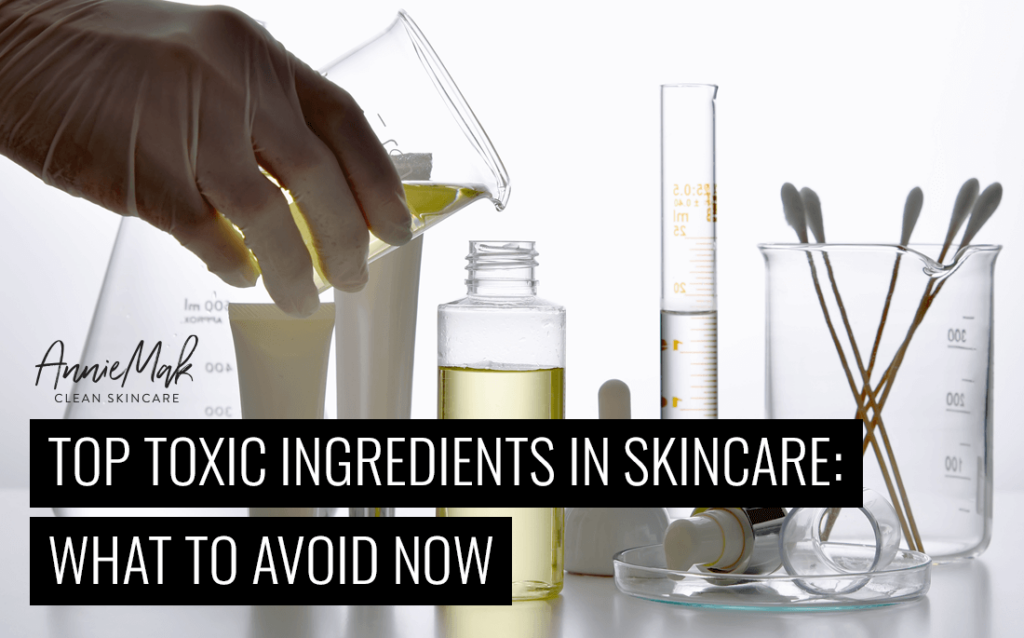




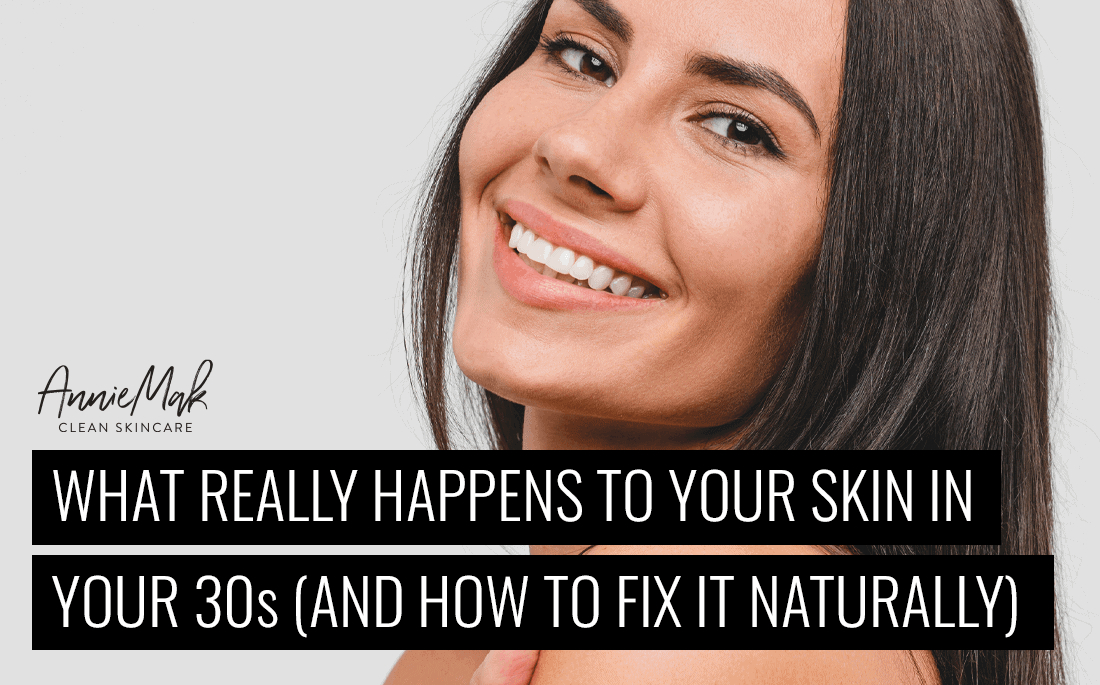
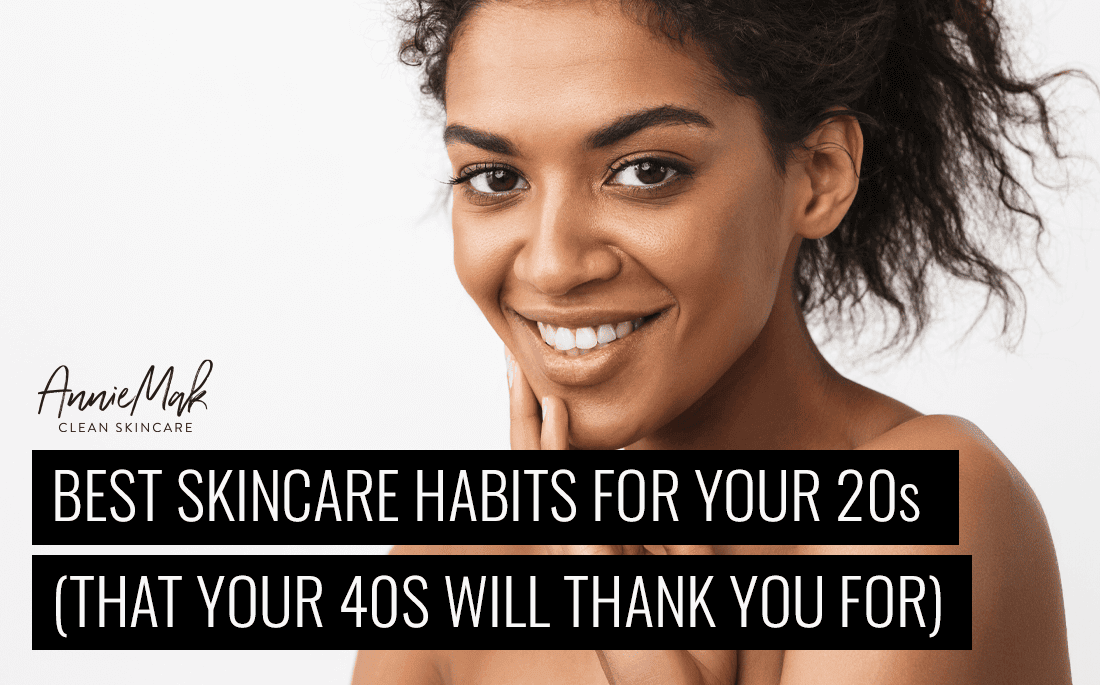
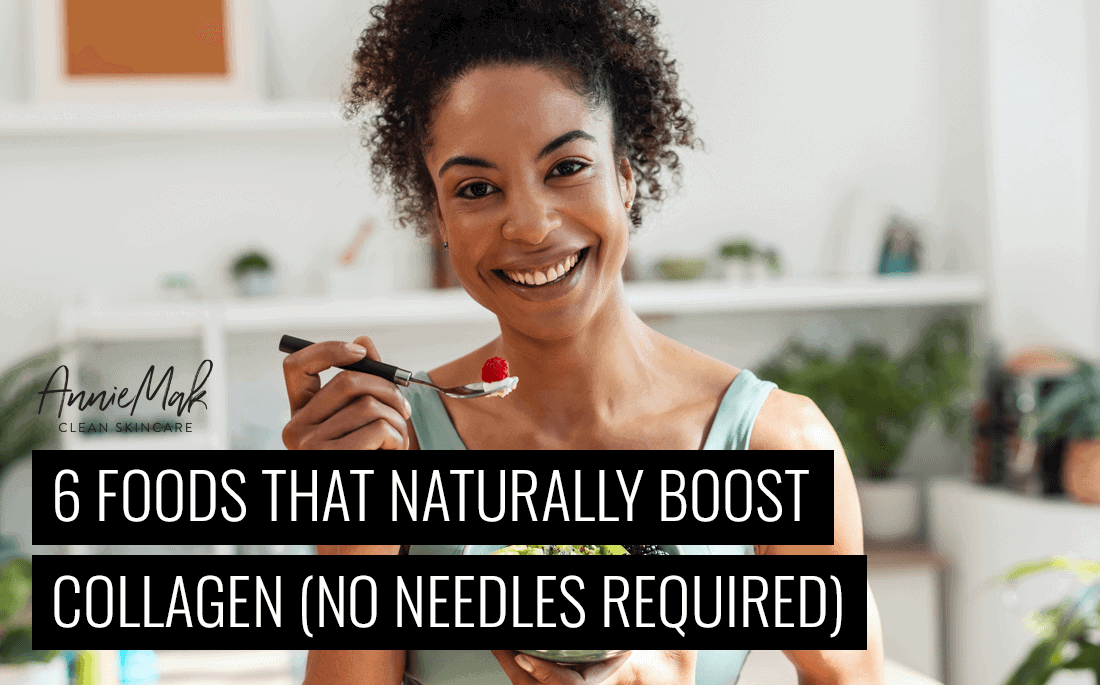
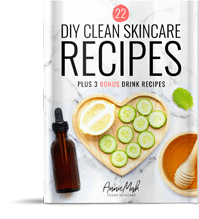
Leave a Reply